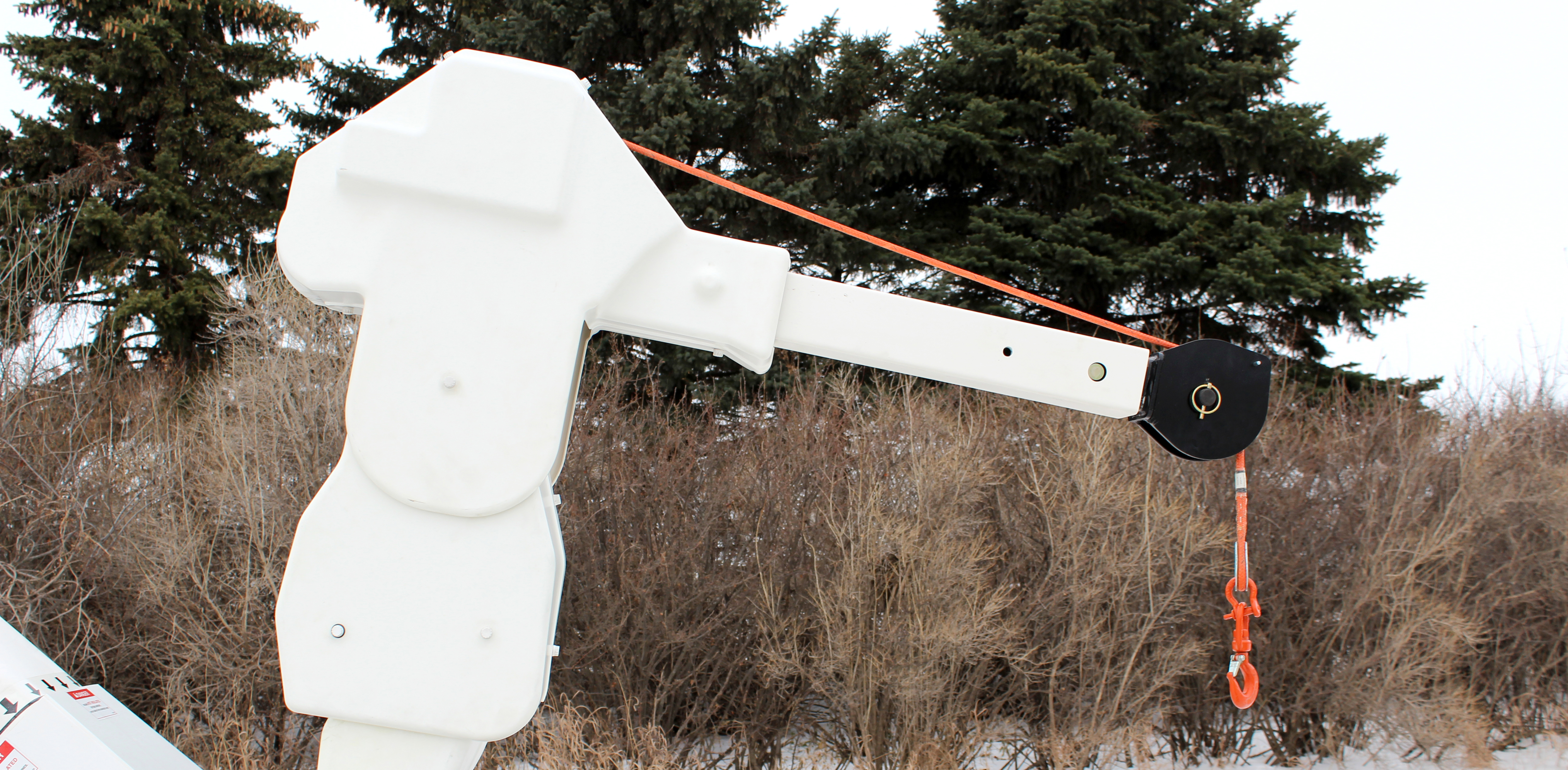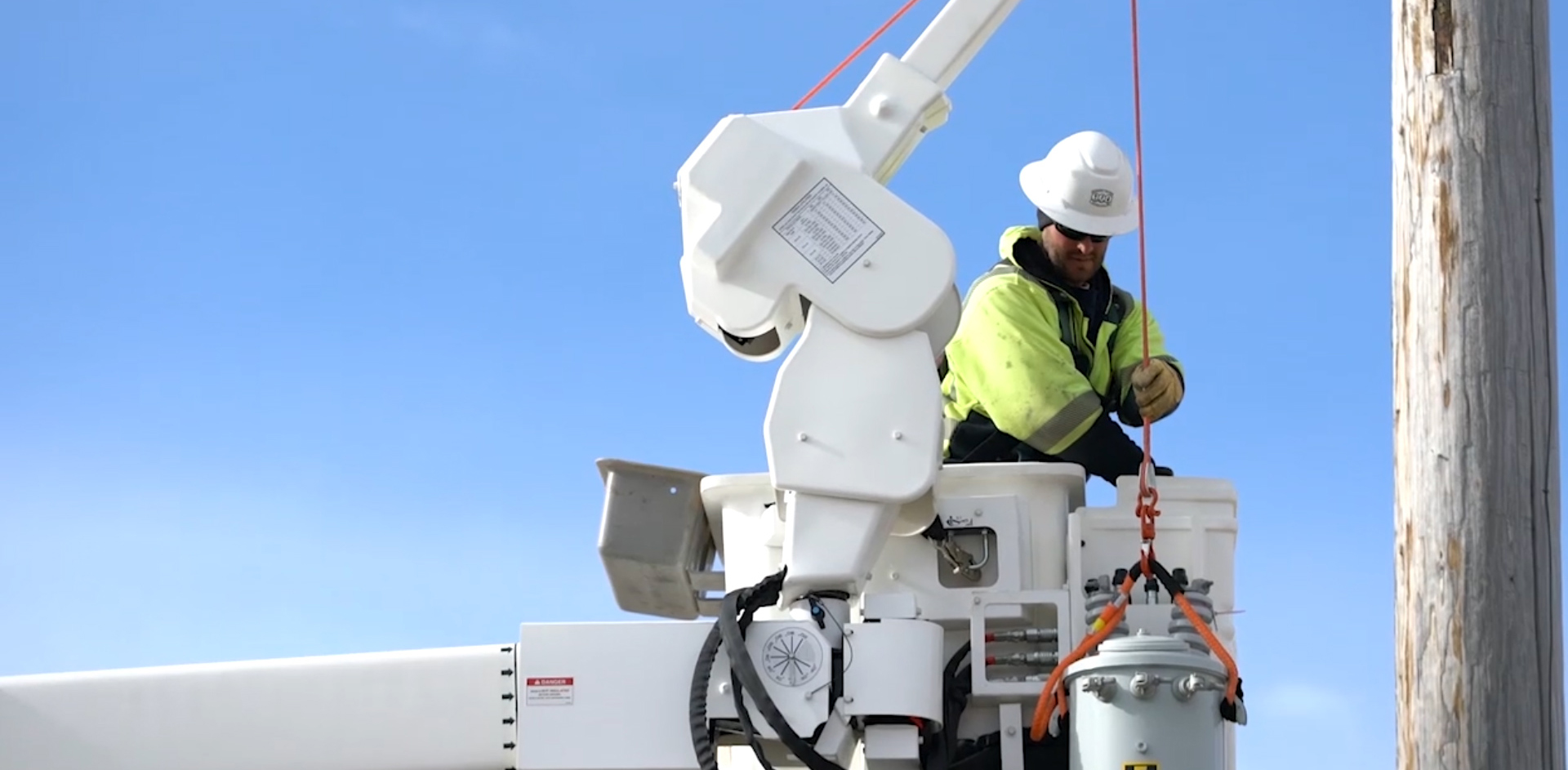Best Practices When Handling Transformers with Your Bucket Truck, Part 2: Inspecting Your Jib

Most bucket trucks sold to the utility industry are equipped with jibs, which makes it very handy to lift and handle transformers. However, not all jibs are the same and the user should evaluate the type of work when choosing the equipment for the job.
Last week, we covered some best practices for knowing your jib when handling transformers in this 4-part series.
Today, we move to the second area that line workers should know: inspecting your jibs.
Inspecting your jib and load line
Knowing the load, and
Understanding proper setup.
Perform regular inspections
Operators are required to perform daily inspections of the entire bucket truck before each shift. As it relates to the jib, visual inspections include the jib, its support structure, the hook and safety latch, and the load line. The owner is responsible to assign personnel for inspections and maintenance of the entire machine including the jib, winch line, hook, and slings at intervals stated in manuals. Load charts and angle indicators must be functional and legible.
On the jib, look for damaged components, damage to the gel coat, cracks or corrosion, excessive wear, and any loose, deformed, or missing bolts, pins, fasteners, locking devices, sheaves turn freely, and missing covers.
What about the winch rope?
The synthetic rope winch line must be inspected daily for deterioration that could result in loss of strength. Always follow the criterial provided in manuals, from the rope manufacturer, or the Cordage Institute.
Among the conditions that should be reported to a qualified person to determine if the rope should remain in service are: excessive roughness, glossy areas indicating heat damage, flat areas or bumps/lumps indicating internal core damage, frayed strands, excessive wear, discoloration associated with chemical contamination, and stiffness due to embedded dirt or shock load damage.
Don’t forget the hook
Any hooks showing defects must be discarded. It is not permitted to make field repairs of hooks by welding or reshaping them. Among the defects to look for in a daily inspection are damaged or missing safety latch, cracks or distortions, and corrosion on the hook nut if equipped. Hooks must have a safety latch to be OSHA compliant. Any Clevises used must be the threaded pin style.
Next Tuesday Utility Pros will cover some best practices on knowing your load.
In the meantime, if you’re bucket truck needs a part replaced or service, contact us here.
Related Posts

Best Practices When Handling Transformers with Your Bucket Truck, Part 1: Knowing Your Jib
When it comes to lifting transformers, bucket trucks equipped with jibs are one of the handiest tools available to line workers. However, not all jibs are the same and the user should evaluate the type of work when choosing the equipment for the job...
Continue Reading

Best Practices When Handling Transformers with Your Bucket Truck, Part 3: Knowing Your Load
Over the last couple of weeks, we covered the first 2 parts of this series on knowing your jib and some best practices on inspecting your jib before handling transformers in this 4-part series. This week, we move to the third area that line workers should know: Knowing Your Load.
Continue Reading

Best Practices When Handling Transformers with Your Bucket Truck, Part 4: Understanding Proper Set Up
Here is the final part of the series on Best Practices When Handling Transformers with Your Bucket Truck. Today, we cover our last part on what line workers should know: Understanding Proper Set Up...
Continue Reading

.png?sfvrsn=cfc0900d_0)